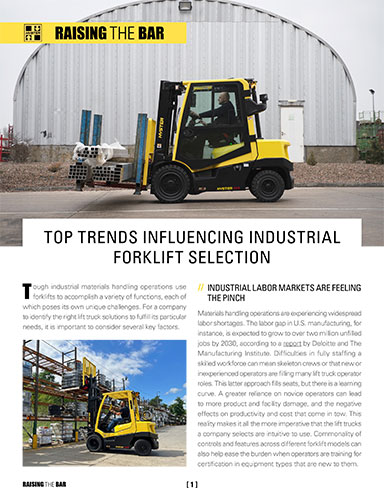UAW-Big Three strike is replete with supply chain implications
While the United Auto Workers (UAW) union strike against the “Big Three” of General Motors, Ford, and Stellantis (Chrysler's parent company) has been ongoing since September 15, coupled with the number of employee walk-outs continuing to rise, the supply chain impacts and ramifications are likely to increase the longer the situation goes on, according various industry stakeholders.
To be sure, the timing for a labor strike in any industry is never good, but the damage a long-term strike could inflict on the automotive sector could be particularly acute, given the limited availability of various automobiles, which has been an intermittent issue going back to the onset of the pandemic.
Spencer Shute, principal consultant at Proxima, a Bain & Company supply chain consulting firm, explained in comments provided to LM that the UAW strike has the potential to send the automotive supply chain into a bullwhip effect in overdrive—largely due to the unpredictability of striking locations, which United Auto Workers President Shawn Fain has coordinated in order to get laborers the best deal possible.
“This will cause canceled orders, surplus, and possible bottlenecks across the supply chain,” he said. “Not only is this an upstream supply chain concern but also a downstream concern, as the inevitable impact on consumers in the auto market unfolds. While some companies may benefit initially from reduced supplier orders coming from GM, Ford, and Stellantis, as the strikes progress and prolong, disruption will impact the whole automotive supply chain even further than the initial blow, and forecast predictability is greatly reduced, creating even more uncertainty for the entire industry.”
What’s more, Shute noted that suppliers will be looking to other auto manufacturers to prevent their supply chains from having too much on-hand product while simultaneously working to ensure supply chain continuity once the strikes are over.
“Compounding economic conditions have already started to impact the new car market but expect the non-UAW manufacturers to work on securing greater market presence during this time,” he added.
From a freight movement perspective, Ken Adamo, Chief Data Scientist, for DAT Freight & Analytics, told LM that a long-term strike would be devastating, in terms of volumes, especially for Midwestern carriers.
“There's a lot of freight that moves in around in between the kind of big three ecosystem,” he said. “I think the part of this with the least impact, oddly, will be finished autos, to be honest. A lot of that moves on trains. I think the story is all of the inbound shipping and in between shipping that happens. Think of the the parts, the components, the glass and all of the that comes in to make the cars and all the tier one auto suppliers and even in between and even trickling into parcel, when you think about the dealer part network shipping that happens.”
The DAT executive added that, looking ahead, this situation is likely several weeks away from that type of situation, in terms of end-use product being significantly impacted.
“Most of the big three have 40 or more days of inventory on hand,” he said. “I think the UAW knows how much runway they have to play with before it really starts to cut into bone. But it's escalating. I mean, other than all the other labor problems we've talked about over the last year and a half, this one seems to actually be escalating. It is definitely a bearish situation for trucking.”
With the automotive strike occurring at a time when U.S.-bound imports remain low, Walter Kemmsies, president of The Kemmsies Group, a provider of industrial and logistics real estate brokerage and consulting services, made the case that any situation which would boost current import readings would be welcomed news.
“They [automotive manufacturers] are basically saying if you start messing with my supply chain by going to the places where the parts are kept, I can still ship stuff from other parts of the world, like Japan, Korea, either by sea or by air. I can get stuff from Mexico, parts from Europe, and I can fly them in. I can also put them in containers and send them over.”
Regarding unions, Kemmsies noted that unions around the world are a lot less-stronger than they used to be, especially when compared to the 1970s, coupled with what he called a suspicion that the auto companies just started to ramp up production of all kinds of things outside the U.S. to get ahead of the labor situation.
“They've got plenty of inventory of things going to where they are going to be needed already in transit,” he said. “I could be wrong, but I don't think I don't think the corporate CEOs overlooked this.
A logistics services executive told LM that leading up to the strike, there had been a heavy focus on contingency planning related to it.
Part of that planning, the executive said, is being careful regarding asset placement, with a focus on trying to not have them as engaged in the areas that would be most impacted.
“That has more to do with after-market parts and some of those types of things in the production lines,” the executive said. “It is a situation that is very difficult to work through. We hope everybody has cool heads in that space so that major areas of the economy are not shut down because of this.”













